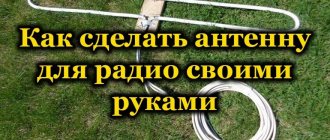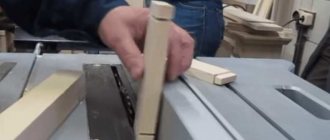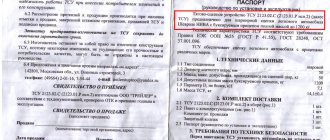To reliably receive digital terrestrial signals and display television channels, you need the right antenna. The best way is to buy a factory design with an amplifier. This way you will be able to catch up to 30 terrestrial channels of the DVB-T2 standard on the territory of the Russian Federation, even if the repeater is very remote.
An alternative is a homemade antenna. It is possible to produce more than 10 design options that can accept “digital”. One of the designs that provides a good signal is the Kharchenko antenna.
In the circle of radio amateurs it is also called “biquadrat” (double square), “eight”, “diamond-shaped”, “double diamond”, “double zigzag”, “zigzag”.
In order for the biquad to work at the highest level, you need to make an antenna in accordance with the wavelength that is transmitted by the digital repeater. Therefore, it is necessary to make small calculations, since the quality of DVB-T2 signal reception depends on this.
The concept of the Kharchenko antenna
This is a zigzag antenna that looks like two squares fastened together. Each vibrator angle is 90°.
Signal reception at a sufficient level is ensured due to the design, compliance with the values, and wire length. It is for this reason that it is important to calculate the antenna for digital terrestrial television as accurately as possible. It is necessary to calculate the length of the conductor.
The biquad antenna can be used not only for receiving digital TV, but also as an amplifier for other types of signals. You can calculate the design in such a way that it turns out to strengthen the signal of mobile communications, mobile Internet (3G, 4G), Wi-Fi signal. In each case, when calculating, you will need to substitute different values into the formula.
The diamond-shaped antenna, in addition to its wide range of applications, has the following advantages:
- high gain;
- wide scope of application (described in a paragraph earlier);
- broadband – capable of receiving meter and decimeter waves simultaneously, which means you can tune in to digital and analog channels at once;
- ease and low cost of production. Even a beginner can make a Kharchenko antenna with his own hands for digital TV. You just need to make a simple calculation for the specific needs, bend a piece of copper wire according to the template and connect the antenna cable to the structure.
Theoretical part
indeed, if we err slightly against the truth and use the fact that the antenna within one range is indeed very broadband, then it works quite acceptably with a 50 or 75 ohm cable without special matching and tuning measures. But, if we look at everything in detail, it turns out that the antenna resistance very much depends on the shape of the frames and, of course, on their size. For example, the graph on the right shows the biquad impedance curves depending on the physical size of the frames. And we already know that the antenna is very broadband and can successfully operate not only at the resonant frequency but also near it. Therefore, biquadrat antennas are sometimes called not a resonant antenna, but a band antenna. Angle “a” is the physical angle between the vertical and the frame elements.
It will be interesting➡ Tesla coil (Transformer) self-assembly on your own
In this particular case, the angle is 45 degrees, that is, the shape of the frames are perfect squares. On the graphs you can see that if the perimeter of the frames exactly corresponds to the wavelength (the side of the square is equal to 0.25 of the perimeter), their impedance lies in the range of 50-60 ohms. If the side of the square is increased to 0.33, then the resistance increases to 120 ohms. It is calculated that the maximum gain of the biquad and the best directional properties will be when the length of the side of the square is equal to 0.375. Of course, the resistance increases many times over - up to 600-700 ohms, which is of course a lot even for our idea. The second graph, on the left, shows the dependence of resistance on angle “a”. If we consider the resistance graph with a square side length equal to 0.25 perimeter - directly resonant, but with an angle of the side to the vertical equal to 60 degrees, then we will find that the resistance of the biquadrat, or Kharchenko antenna, will not be 50 ohms, but 100!
Large Kharchenko antenna.
Thus, we obtain an antenna with a circular radiation pattern with minimal difficulties in manufacturing and configuration. If one antenna is rotated 90 degrees not only in the horizontal, but also in the vertical plane, then we get an antenna with circular polarization and a circular radiation pattern. The simplest calculation will show you that to form an angle of 60 degrees between the vertical and the sides of the rhombus (with a perimeter equal to the wavelength, in our case 2000 mm), the height of the biquadrat should be 1000 mm, and the distance between the extreme points 866 mm.
The resistance of one such “biquadratin” will be 100 ohms. To obtain a circular radiation pattern, two biquads are placed at an angle of 90 degrees to each other and connected to each other using a quarter-wave transformer-phase shifter made of a cable with a resistance of 50 Ohms. Taking into account the shortening factor (for RG-58), this is a segment of 34.2 cm. You have probably already noticed my love for copper wire and sewer pipes? So it’s true, I don’t know a better material for modeling and practical manufacturing of VHF antennas.
Although, of course, everything described below can be replaced with your own structure made of wood, for example, or other available insulating material, and the wires with pipes or strips of tin or galvanized steel. Don't forget that there is an easy way to evaluate the quality of the antenna dielectric material.
If I had not been a radio engineer in my youth, I would simply repeat the almost universally repeated phrase that the gain of the Kharchenko antenna is 6-8 dB. But since I understand the issue, I can say that the gain of one Kharchenko antenna (when it is 50 ohm) will not be more than 4 dB. In our case, when the resistance of one antenna is higher and the efficiency is better, maybe a little more. There will be no gain in gain from two antennas forming a circular radiation pattern, but we can safely say that in this antenna, let’s call it conventionally “two diamonds” (in appearance), the gain will be at least 4 dB in all directions.
So, let's move on to the design. Due to the fact that plastic tube sticks from McDonald's balloons are no longer suitable, the idea came to mind to use plastic sticks from children's skis, which the eldest grandson has already outgrown, and the youngest no longer wants red. The length and diameter are suitable, only the color let us down...











